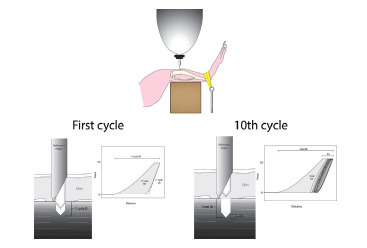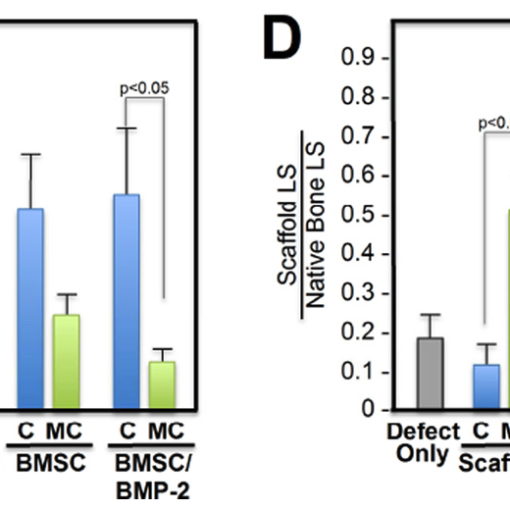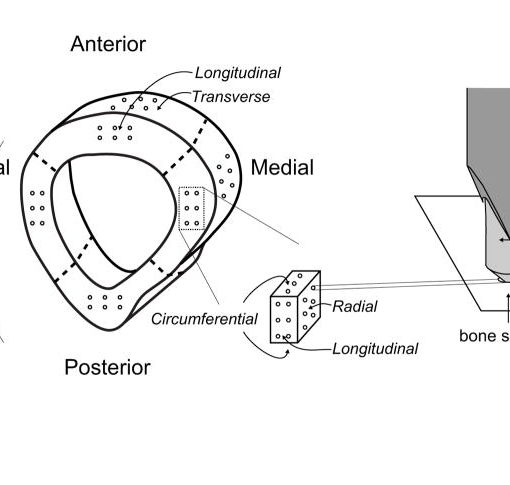Abstract
Gap junctions are formed from ubiquitously expressed proteins called connexins that allow the transfer of small signaling molecules between adjacent cells. Gap junctions are especially important for signaling between osteocytes and other bone cell types. The most abundant type of connexin in bone is connexin 43 (Cx43). The C-terminal domain of Cx43 is thought to be an important modulator of gap junction function but the role that this domain plays in regulating tissue-level mechanics is largely unknown. We hypothesized that the lack of the C-terminal domain of Cx43 would cause morphological and compositional changes as well as differences in how bone responds to reference point indentation (RPI) and fracture toughness testing. The effects of the C-terminal domain of Cx43 in osteocytes and other cell types were assessed in a murine model (C57BL/6 background). Mice with endogenous Cx43 in their osteocytes removed via a Cre-loxP system were crossed with knock-in mice which expressed Cx43 that lacked the C-terminal domain in all cell types due to the insertion of a truncated allele to produce the four groups used in the study. The main effect of removing the C-terminal domain from osteocytic Cx43 increased cortical mineral crystallinity (p=0.036) and decreased fracture toughness (p=0.017). The main effect of the presence of the C-terminal domain in other cell types increased trabecular thickness (p<0.001), cortical thickness (p=0.008), and average RPI unloading slope (p=0.004). Collagen morphology was altered when either osteocytes lacked Cx43 (p=0.008) or some truncated Cx43 was expressed in all cell types (p<0.001) compared to controls but not when only the truncated form of Cx43 was expressed in osteocytes (p=0.641). In conclusion, the presence of the C-terminal domain of Cx43 in osteocytes and other cell types is important to maintain normal structure and mechanical integrity of bone.
https://www.ncbi.nlm.nih.gov/pubmed/27113527
Bone. 2016 Jul;88:85-91. doi: 10.1016/j.bone.2016.04.021. Epub 2016 Apr 23.




